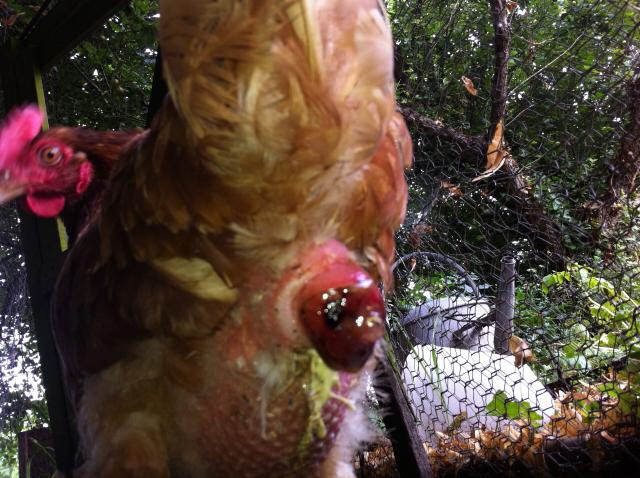Health issues
Genetic manipulation

The modern-day egg-laying hen has been selectively bred and genetically manipulated over many years to lay an excessive number of eggs, over 300 eggs per year, placing huge stress on their bodies. The most common breed of hen exploited for their eggs in the industry are ISA Browns and Hyline Browns, who have been genetically selected for their high output of eggs.
Reproductive issues
 Hen suffering from cloacal prolapse.
Hen suffering from cloacal prolapse.
It is not uncommon for hens to experience reproductive problems such as cloacal prolapse. Cloacal prolapse is a condition where the outer end of the reproductive tract fails to retract after hens have laid an egg. In some cases, the hen's oviduct can remain resting outside of the cloacal opening, and cage mates may peck at the prolapse, which can lead to hemorrhaging, infection, cannibalism and death.
Hens that are bred to lay a high volume of eggs also commonly suffer from tumours in their oviduct.
Osteoporosis
 Layer hen suffering from osteoporosis, unable to stand properly.
Layer hen suffering from osteoporosis, unable to stand properly.
It has been estimated that a huge 80%-89% of hens used to produce commercially sold eggs suffer from osteoporosis, a disease characterised by weakened bones.
Calcium stored in bones is used in egg shell production, leaving hens prone to osteoporosis, subsequent bone fractures and fragility. Osteoporosis itself is not painful, however subsequent bone injuries can be the source of both acute and chronic pain.


